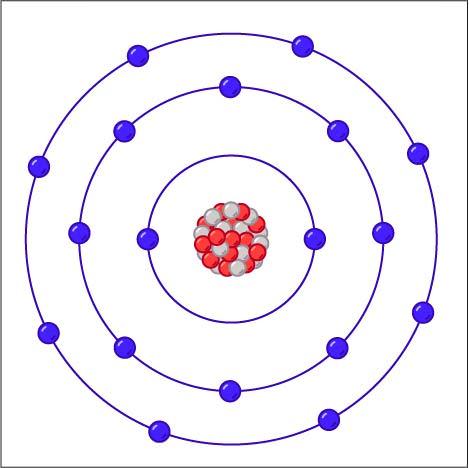Isotopes And Nuclear Stability Study Guide
INTRODUCTION
The term “nuclear stability” refers to a concept that aids in determining an isotope’s stability. The neutron-to-proton ratio must be determined in order to determine an isotope’s stability. This neutron/proton (N/Z) ratio can be used to measure an isotope’s stability.
Examples:
Carbon-12, carbon-13, and carbon-14 are carbon isotopes having mass values of 12, 13, and 14, respectively. Carbon has an atomic number of 6, which means that every carbon atom has 6 protons, giving these isotopes neutron numbers of 6, 7, and 8, respectively.
DEFINITION OF ISOTOPES
In simpler terms, isotopes are varieties of elements with different nucleon counts due to differences in the total number of neutrons in their nuclei. Carbon-14, carbon-13, and carbon-12, for example, are all isotopes of carbon.
Isotopes are often represented in one of two ways:
-
By writing the element’s name, a hyphen, and the isotope’s mass number: Uranium-235 and uranium-239, for example, are two distinct isotopes of the atom uranium.
-
Using the AZE notation (also known as the standard notation): This entails writing an element’s symbol with the atomic number in subscript and the mass number in superscript prefixed. The uranium-235 isotope, for example, is represented as 23592U, while the uranium-239 isotope is represented as 23992U.
ISOTOPE, ISOBAR, AND ISOTONE
Isotopes
- Isotopes of an element are atoms of the same element with varying mass numbers.
- The number of electrons and protons in isotope atoms are clearly the same, while the number of neutrons varies. There are now 112 elements known.
Isobar
- Those atoms whose atomic weights are nearly identical and feature distinct atomic numbers are known as isobars to every other.
- It is apparent that during isobaric atoms, the number of electrons, protons and neutrons are different.
Isotone
- Isotones are atoms with the same number of neutrons in various elements.
- The isotones of carbon-14 are nitrogen-15 and oxygen-16. Their nuclei each have eight neutrons.
- The argon-38 and calcium-40 isotones atoms are chlorine-37 and argon-38, respectively. Their nuclei each have 20 neutrons.
APPLICATIONS AND USES
- Stable isotopes of oxygen, hydrogen, sulfur, nitrogen, and carbon are used in environmental and ecological experiments by scientists.
- Because of the kinetic isotope effect, isotopic substitution can be utilized to figure out how a chemical reaction works.
- The nuclear transitions of certain isotopes, such 57Fe, are also used in Mössbauer spectroscopy.
- Radionuclides are also useful. The development of nuclear power and nuclear weapons both necessitate enormous quantities of certain isotopes.
- Isotopic labeling, the use of uncommon isotopes as tracers or markers in chemical reactions, is another common application.
- In radiotherapy, cobalt-60 is the isotope of choice.
- Phosphorus-30 is used to treat leukemia and other blood cancers.
- The radioactive iodine-131 is injected into the body as a ‘tracer’ to check the thyroid gland’s activity. It aids in the detection of the thyroid gland’s iodine uptake.
- Nuclear power facilities use the uranium-235 isotope as a fuel.
ISOTOPE EFFECTS
- The fluctuation of some properties of an element (such as density and spectrum) as a function of the mass of the isotopes involved.
- Isotope effects are a manifestation of nuclei’s quantum nature; zero-point fluctuations cause changes in vibrationally averaged features of molecules containing lighter and heavier hydrogen isotopes.
- Isotopes exist in every element. Isotopes are divided into two categories: stable and unstable (radioactive).
SUMMARY
- Isotope is one of two or more types of chemical element atoms with nuclei that have the same number of protons but differing numbers of neutrons.
- They have the same atomic number and, as a result, chemical behavior that is virtually identical, yet they have distinct atomic masses.
- The majority of elements found in nature are mixes of many isotopes.
FAQs
Q. How are isotopes related to nuclear stability?
The concept of nuclear stability aids in determining an isotope’s stability.
Q. Do isotopes affect stability?
Furthermore, the isotope contains an even number of neutrons and protons, which improves nuclear stability.
Q. What 3 factors affect nuclear stability?
The use of nuclear weapons. Mass defect and binding energy are two terms that are often used interchangeably. The neutron-to-proton ratio (N/Z ratio) is the ratio of neutrons to protons.
Q. Are most isotopes stable?
Only 90 isotopes will be fully stable.
We hope you enjoyed studying this lesson and learned something cool about Isotopes and Nuclear stability! Join our Discord community to get any questions you may have answered and to engage with other students just like you! We promise, it makes studying much more fun!😎
REFERENCE
- Isotope: https://en.wikipedia.org/wiki/Isotope Accessed 19th April 2022.

